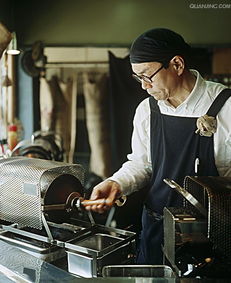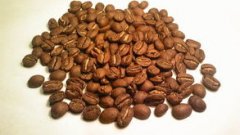Coffee properties of coffee beans during roasting
The process of fried beans is the main process of heating raw beans and developing the aroma and taste of coffee. The aroma and taste emitted are determined by the original characteristics of each kind of raw bean. The depth of fried beans depends on the type of raw beans, market demand or the way they are cooked. What kind of baking machine controls the depth of fried beans. Even though the chemical and physical components of various raw beans are different, the principles of these ingredients are similar even if they are slightly different in the process of stir-frying.
Baking is a process in which raw beans filled with water are exposed to rapid heating to 400 degrees Fahrenheit (200 degrees Celsius). At this temperature, the interior of the coffee bean produces high temperature decomposition. A brief exothermic process took place. The temperature of coffee beans increased to 392 to 410 degrees Fahrenheit (200 to 210 degrees Celsius), while coffee beans lost 4 to 6 percent of their weight. Raw beans have 12% moisture. From then on, the process of fried beans will lose a total of 16% to 18% moisture. In the process of baking, the more moisture is lost, the darker the color of coffee beans is. The color of coffee beans is also formed in the process of rapid weight loss. Most of the sugar will change and the coffee beans will continue to swell (about twice the size of the original beans) and cracks will appear on the surface at the same time.
At the beginning of high temperature decomposition, about 7.5% of chlorophyll in raw beans decreased slightly, while only about 4% of fried beans were left. The PH value of raw beans was about 6.0. at the beginning of high temperature decomposition, it gradually decreased to 5.5, and then decreased to 4.9 in lightly fried beans. Basically, this process is a dry distillation process that uses thermal decomposition of organic matter in raw beans. The cessation of fried beans when they reach the desired taste is the same as the desired degree of high temperature decomposition and weight loss. The time to stop the stir-fried beans is determined by the depth of the beans in the baking, and also by the temperature of the coffee beans under the temperature control system of the roaster. The key point is that the high-temperature decomposition of sugar and the degree of caramelization determine the ideal taste and aroma of coffee.
There are two speeds of weightlessness in the baking process. The first is slow, which is caused by the evaporation of water in the beans. The second is rapid high temperature decomposition. When the rate of loss of moisture increases, the carbon dioxide in beans increases rapidly. The timing of this transition occurs at the beginning of high temperature decomposition, that is, about 365 degrees Fahrenheit (185 degrees Celsius) or about 10% water loss from raw beans. Although the release rate of 2% of carbon dioxide is calculated, it is possible to release 1% of carbon dioxide in the delicious shallow fried beans. These common fried beans mentioned above are very similar in all kinds of coffee, even if they are very different Robustas (Robbins beans) such as Java coffee. However, these similarities should not be confused with the original size, species, water content, and other factors that affect the development of the ideal taste of each batch of beans.

Important Notice :
前街咖啡 FrontStreet Coffee has moved to new addredd:
FrontStreet Coffee Address: 315,Donghua East Road,GuangZhou
Tel:020 38364473
- Prev

Cuban Crystal Mountain Coffee beans-Cubita
In Cuba, the cultivation of coffee is regulated by the state. The best coffee growing area in Cuba is located in the Central Mountains. Because this area not only grows coffee, but also produces quartz, crystal and other precious minerals, it is also known as Crystal Mountain. Crystal Mountain is adjacent to the Blue Mountains of Jamaica, with similar climatic conditions and taste similar to Blue Mountain Coffee, comparable to the Blue Mountains of Jamaica.
- Next

Tips on how to grind coffee beans
According to its size, the grinding methods of coffee beans can be divided into three types: rough grinding, medium grinding and fine grinding. Use the appropriate grinding method according to the coffee utensils. There is also medium fine grinding or very fine grinding (powdered coffee powder) which is finer than fine grinding. The timing of grinding coffee beans is before brewing coffee, only the need for grinding is the top grade. After the coffee bean is ground into powder, its surface area increases.
Related
- Guji coffee producing area of Guji, Ethiopia: Humbela, Shakiso, Wulaga
- What is the most expensive variety of Qiloso in BOP multi-variety group?
- How to store the coffee beans bought home?
- Why are Yemeni coffee beans so rare now?
- Ethiopian Sidamo all Red Fruit Sun Sun Santa Vini Coffee beans
- SOE is mostly sour? What does it mean? Is it a single bean? what's the difference between it and Italian blending?
- Is Italian coffee beans suitable for making hand-brewed coffee?
- How to choose coffee beans when making cold coffee? What kind of coffee beans are suitable for making cold coffee?
- Just entered the pit to make coffee, what kind of coffee beans should be chosen?
- Can only Japan buy real Blue Mountain Coffee? What are authentic Jamaican Blue Mountain coffee beans?

